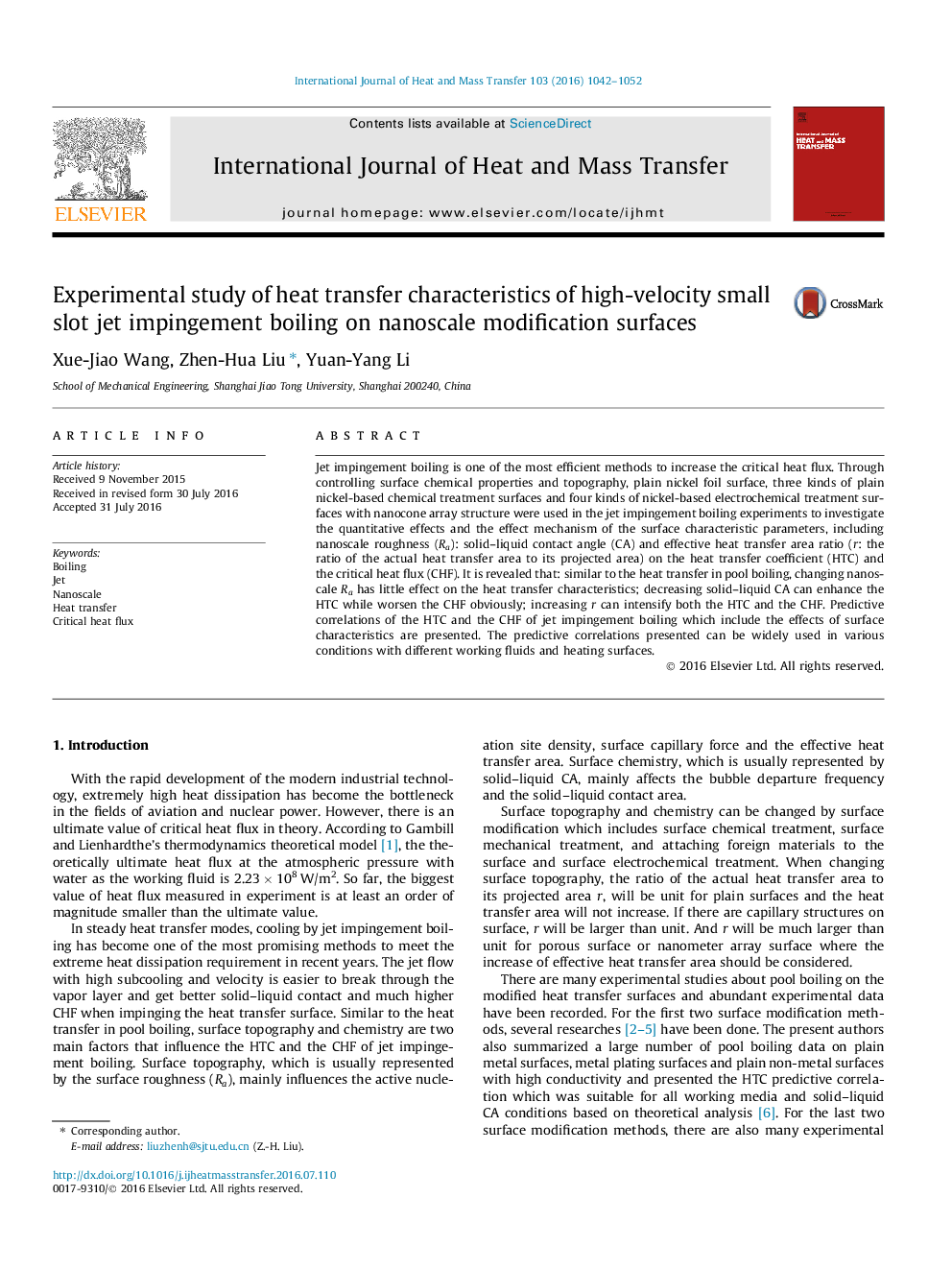| Article ID | Journal | Published Year | Pages | File Type |
|---|---|---|---|---|
| 7055283 | International Journal of Heat and Mass Transfer | 2016 | 11 Pages |
Abstract
Jet impingement boiling is one of the most efficient methods to increase the critical heat flux. Through controlling surface chemical properties and topography, plain nickel foil surface, three kinds of plain nickel-based chemical treatment surfaces and four kinds of nickel-based electrochemical treatment surfaces with nanocone array structure were used in the jet impingement boiling experiments to investigate the quantitative effects and the effect mechanism of the surface characteristic parameters, including nanoscale roughness (Ra): solid-liquid contact angle (CA) and effective heat transfer area ratio (r: the ratio of the actual heat transfer area to its projected area) on the heat transfer coefficient (HTC) and the critical heat flux (CHF). It is revealed that: similar to the heat transfer in pool boiling, changing nanoscale Ra has little effect on the heat transfer characteristics; decreasing solid-liquid CA can enhance the HTC while worsen the CHF obviously; increasing r can intensify both the HTC and the CHF. Predictive correlations of the HTC and the CHF of jet impingement boiling which include the effects of surface characteristics are presented. The predictive correlations presented can be widely used in various conditions with different working fluids and heating surfaces.
Related Topics
Physical Sciences and Engineering
Chemical Engineering
Fluid Flow and Transfer Processes
Authors
Xue-Jiao Wang, Zhen-Hua Liu, Yuan-Yang Li,
